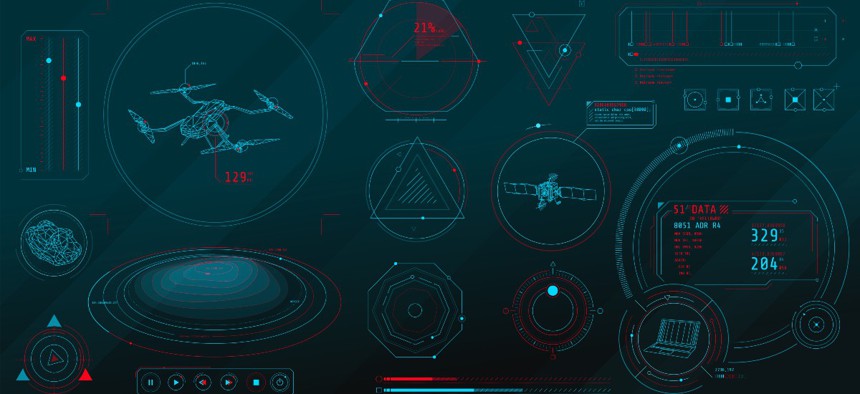DHS Calls for Counter-Drone Information to Help Fight Threats

ConceptCafe/Getty Images
The request for information will help the Department of Homeland Security learn about industry capabilities for counter-unmanned aircraft systems.
The Department of Homeland Security is looking to learn more about the availability of counter-unmanned aircraft systems—or C-UAS—according to a request for information filed on Tuesday.
DHS requested industry information on the availability of C-UAS to “include the capability to detect, identify, classify, track and/or mitigate these threats.” The agency is looking for fixed-site and “rapidly deployable, mobile and single person-portable employment modes to provide situational awareness and mitigation capabilities for personnel in the field.”
The agency noted that such capabilities are necessary to address existing and future threats and gaps with UAS, and requested that products mentioned in the responses would have a Technology Readiness Level and a Manufacturing Readiness Level of at least six.
According to the RFI, desired capabilities will align with the agency’s mission and strategic goal of countering terrorism and homeland security threats. For example, related objectives include: collecting, analyzing and sharing actionable intelligence; detecting and disrupting threats; protecting designated leadership, events and soft targets; and countering weapons of mass destruction and emerging threats.
Specifically, DHS asked respondents to detail prediction, detection, identification, classification, tracking and response capabilities. This includes the ability for the C-UAS to: receive flight information intelligence and other historical information; find an unmanned airborne object within a defined time and volume of airspace in all weather circumstances all year long; pinpoint a detected Track of Interest with a unique identifier and aircraft characteristics; decide the level of threat, risk or intent of a detected ToI; continuously follow the movements of a ToI from detection to response; and use necessary resources to address a possible attack, according to the RFI.
Additionally, each C-UAS will be responsible for a specific coverage area, and the number of these deployed in each area will vary depending on need and availability. When a C-UAS is deployed, it will provide the operator with the aforementioned information.
DHS is looking for scalable, adaptable and flexible C-UAS configurations and C-UAS equipment—both hardware and software—that can be “easily operated by non-experts who have had minimal training.”
Responses are due via email to the contracting officer by Feb. 7 at 5pm ET. DHS will use responses for procurement planning purposes for a potential future award. Some vendors may be asked to perform a product demonstration.






